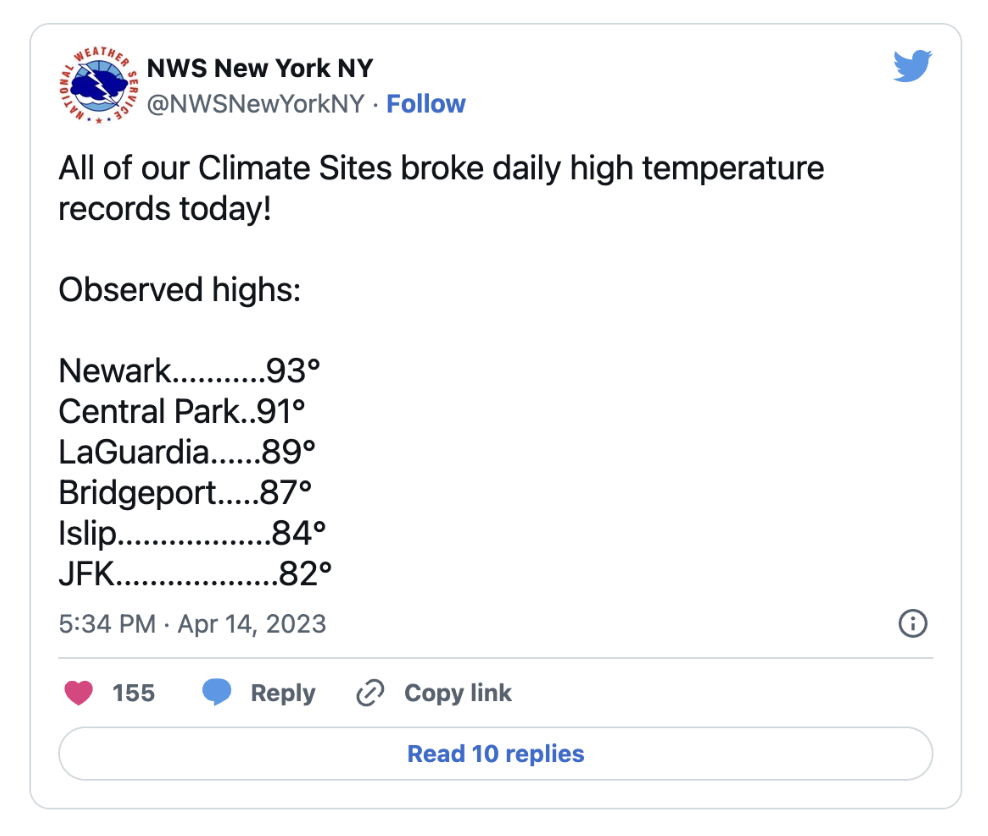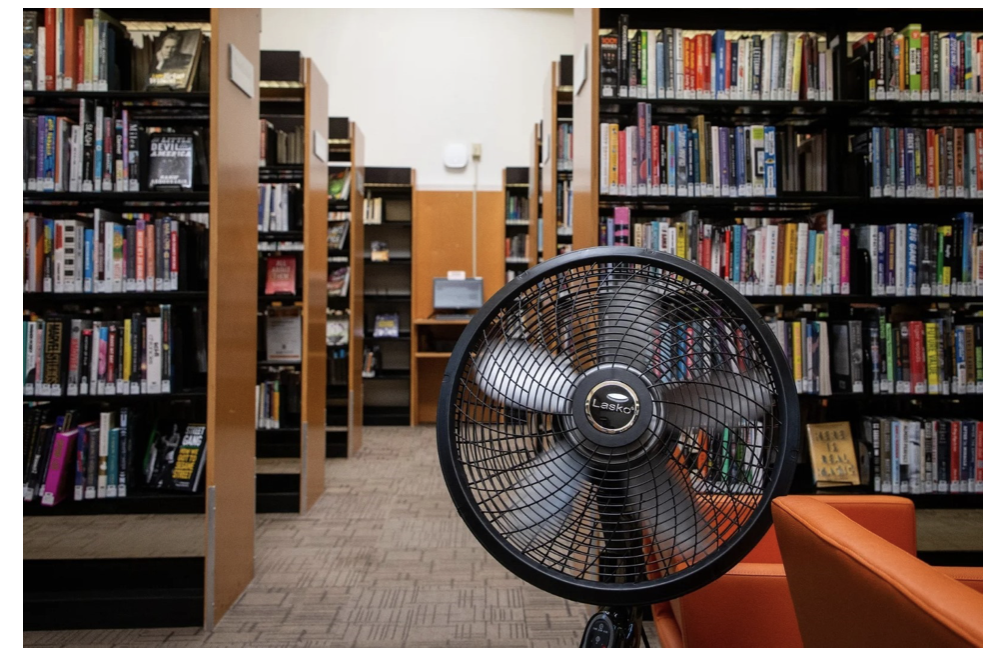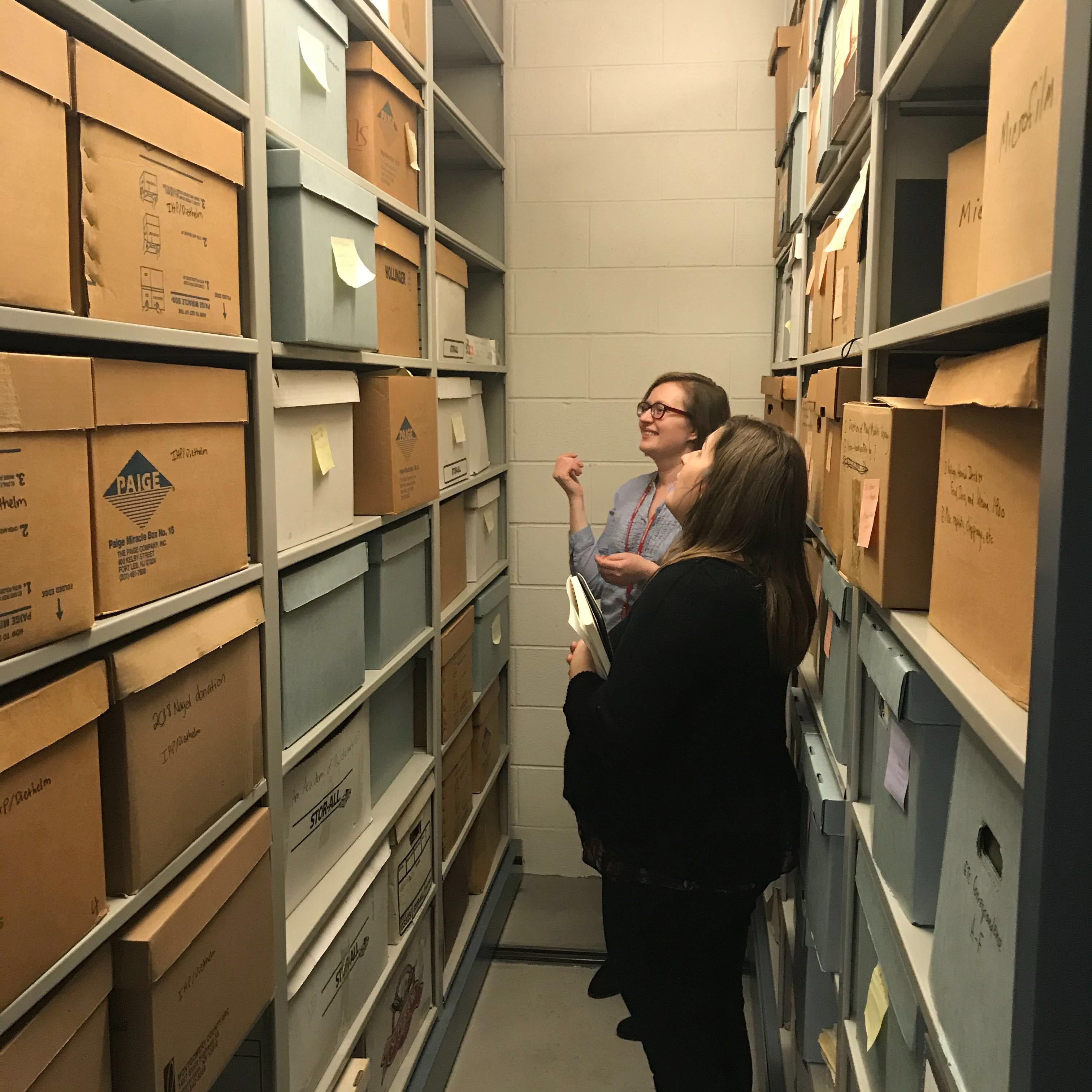
Remember how hot it was in April? While that month in our state is not known for its amazing weather, this year there were a few days when the temperatures climbed into the 80s and 90s (°F).
 Notwithstanding the larger climate change implications for record heat over the next five years, what does this mean for this summer? Rob Frydlewicz is a weather historian who founded the New York City Weather Archive. He pointed out in an interview that there have only been three other years — 2010, 1991, and 1977 — where the city has had temperatures in the 90s before mid-April. In each of those years, the summers ended up being scorchers. And if New York City is getting record heat, much of the rest of the state is as well.
Notwithstanding the larger climate change implications for record heat over the next five years, what does this mean for this summer? Rob Frydlewicz is a weather historian who founded the New York City Weather Archive. He pointed out in an interview that there have only been three other years — 2010, 1991, and 1977 — where the city has had temperatures in the 90s before mid-April. In each of those years, the summers ended up being scorchers. And if New York City is getting record heat, much of the rest of the state is as well.
The increased heat and humidity mean increased threats to susceptible collections, including chemical degradation, mold growth, and pest infestation. Collecting institutions should be especially vigilant during the summer months. Here are five tips to help protect collections.
-
Avoid Temperature and Relative Humidity Fluctuations. As much as possible, keep temperatures in your storage and exhibition areas stable between 65°F to 70°F (18°C to 21°C) and relative humidity between 30% to 50%. Fluctuations in temperature and relative humidity are damaging especially to paper-based collections. As the Northeast Document and Conservation Center (NEDCC) notes, Library and archival materials are hygroscopic, readily absorbing and releasing moisture and responding to environmental fluctuations by expanding and contracting. These dimensional changes accelerate deterioration and lead to such visible damage as cockling paper, flaking ink, warped covers on books, and cracked emulsion on photographs. With summer’s heat spells, consider increasing how often you are checking both levels. For more information on temperature and relative humidity, see the Conservation Center for Art & Historic Artifact’s tech bulletin, Temperature, Relative Humidity, and Dew Point for Collections. If you do not currently take these measurements, consider implementing an environmental monitoring program. Learn more about starting one here.
-
 Use a Dehumidifier if Needed. Relative humidity inside your building can spike in the summer months when it is hot outside and air-conditioned inside. A dehumidifier in a storage or display area can keep the relative humidity low, helping prevent mold growth and pest infestations. Note that portable dehumidifiers contain chambers that fill with water and must be regularly emptied or connected to a drain. Learn what size you would need.
Use a Dehumidifier if Needed. Relative humidity inside your building can spike in the summer months when it is hot outside and air-conditioned inside. A dehumidifier in a storage or display area can keep the relative humidity low, helping prevent mold growth and pest infestations. Note that portable dehumidifiers contain chambers that fill with water and must be regularly emptied or connected to a drain. Learn what size you would need.
-
Increase Airflow. Good airflow will also help to keep humidity low. Use fans in areas where collections are housed to circulate air and prevent stagnant conditions. Although it seems tempting to let in a cool breeze by opening doors or windows, keep them closed. If the air outside is warmer than the air inside, warm air will flow in and push the cool air out until the inside of the building is the same temperature as the outside. Rely on fans for a breeze!

Fans keep the Seattle Public Library Northeast Branch cool on Friday. Image: Seattle Times.
-
Check for Water Leaks. More frequent or intense summer storms can mean increased rainfall. Especially this time of year, regularly inspect your building for any signs of leaking and monitor areas with known water retention issues. "Smart” water leak detectors designed for home use can be purchased inexpensively. In case of a leak, they will notify staff on their phones. Check out this article that compares options. Routine inspection of these areas will help you immediately address any leaks.

Water damage in a ceiling. Image: Atomicdragon136, CC BY 3.0, via Wikimedia Commons

-
Do Regular Collection Walkthroughs. Checking for water leaks is just one thing to look for during regular collection walkthroughs. Look also for any signs of damage or deterioration caused by heat, humidity, or pests. These walkthroughs should be routine for your institution and undertaken more frequently in hot and humid summer weather. UNESCO even suggests that the period between inspections should be no less than when it takes insect pests to mature from eggs (approximately three weeks for the clothes moth)!
Whatever the weather this summer and beyond, your institution may benefit from a DHPSNY Preservation Survey. These surveys focus on preventive care and mitigating deterioration and damage by analyzing the physical environment of archives and library materials. In addition to pinpointing areas of concern and recommendations for improvement, a Preservation Survey is a valuable tool in fundraising for collections care and is often a prerequisite for grants and other funding opportunities. Contact info@dhpsny.org for more information or just to ask a question about keeping your collections cool this summer.
Do you have a preservation topic, question, or creative solution you would like us to cover in this series? Reach us by email at info@DHPSNY.org, or connect with us on the DHPSNY Facebook page or DHPSNY Community Facebook Group.